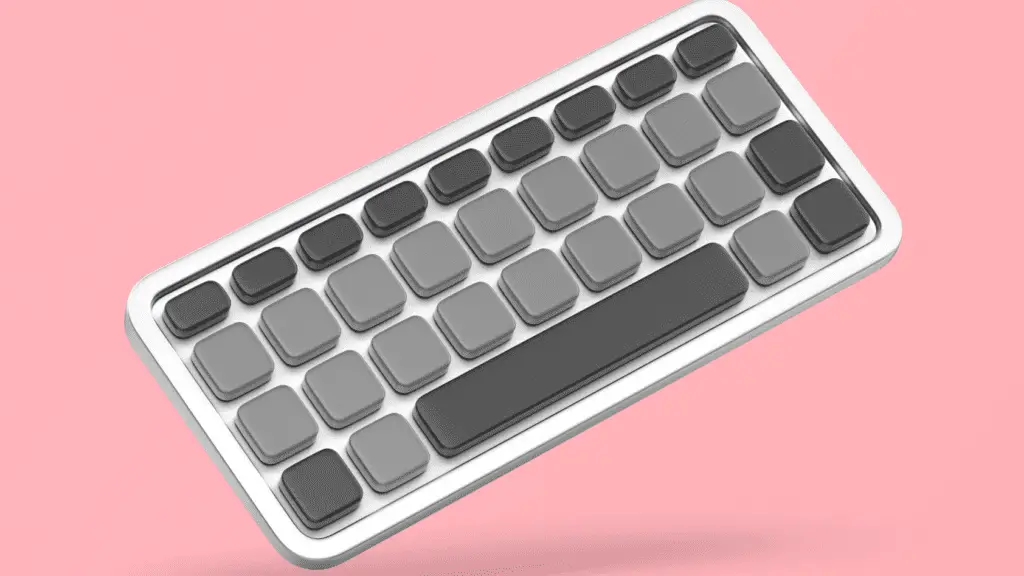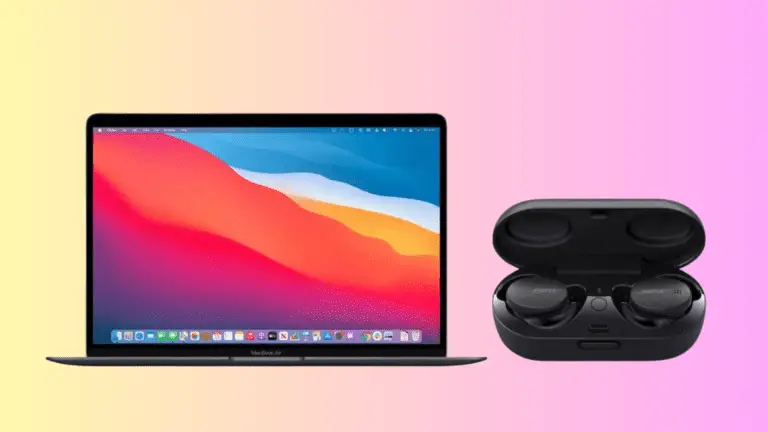In the ever-evolving world of technology, wireless keyboards have emerged as an indispensible tool for Mac users seeking convenience and versatility in their typing experience. Discover How to Connect Wireless Keyboard to Mac: Learn the simple process of setting up and syncing your wireless keyboard with your Mac.
This comprehensive guide aims to demystify the process of connecting a wireless keyboard to a Mac, providing step-by-step instructions and troubleshooting tips.
From activating pairing mode to selecting the keyboard in the Bluetooth window, readers will gain valuable insights to enhance their productivity and embrace the freedom of a wireless keyboard.
Key Takeaways
- Make sure the wireless keyboard is turned on and in pairing mode.
- Access the Bluetooth settings on your Mac and select the keyboard when it appears.
- Logitech K380 wireless keyboard is a compatible option for Mac.
- If the keyboard is not working, check Bluetooth connectivity, battery life, and try restarting the Mac or disconnecting other USB devices.
Step 1: Turn on the Wireless Keyboard
How do you turn on the wireless keyboard on a Mac?
When it comes to connecting a wireless keyboard to a Mac, the first step is to turn on the keyboard. This may seem simple, but it is an important step in the process. To troubleshoot common wireless keyboard connection problems, make sure the keyboard is powered on. The power switch is usually located on the underside of the keyboard or on the side.
Once the keyboard is turned on, you can proceed to pair it with your Mac using Bluetooth. If you encounter any Bluetooth connectivity issues on your Mac, you can troubleshoot them by ensuring that Bluetooth is enabled on your Mac and that the keyboard is in pairing mode.
Following these steps will help you successfully connect your wireless keyboard to your Mac.
Amazon has the Apple Magic Keyboard with Numeric Keypad and the Apple Magic Keyboard Wireless.
Step 2: Open System Preferences
To proceed with connecting your wireless keyboard to your Mac, the next step is to access the System Preferences on your computer.
System Preferences is a centralized location where you can customize various settings on your Mac.
To open System Preferences, you need to click on the Apple logo in the top left corner of your Mac screen. A drop-down menu will appear, and you will find the ‘System Preferences’ option there.
Click on it to open the System Preferences window.
Once you have opened System Preferences, you can proceed with the next steps to connect your wireless keyboard to your Mac.
This step is essential as it allows you to access the necessary settings to troubleshoot any wireless keyboard connection issues you may encounter.
Please note that this article focuses on connecting a wireless keyboard to a Mac, not a PC.
Step 3: Access the Bluetooth Pairing Screen
To access the Bluetooth pairing screen, navigate to the Bluetooth icon in the top right corner of your Mac screen and click on it. This will open the Bluetooth menu, where you can manage your Bluetooth devices.
Once the menu is open, you can follow the steps below to connect your wireless keyboard to your Mac:
- Make sure your wireless keyboard is turned on and in pairing mode.
- On the Bluetooth menu, you will see a list of available devices. Look for your wireless keyboard’s name and click on it to start the pairing process.
- Follow any on-screen instructions that may appear to complete the pairing process.
- Once the pairing is successful, your wireless keyboard should be connected to your Mac and ready to use.
If you encounter any issues during the pairing process, here are some common problems and troubleshooting tips:
Common issues when connecting wireless keyboards to Mac:
- Keyboard not appearing in the Bluetooth menu: Make sure the keyboard is in pairing mode and try restarting your Mac.
- Keyboard disconnecting frequently: Check the battery life of the keyboard and replace the batteries if necessary.
- Lag or delay in keyboard input: Make sure there are no other devices interfering with the Bluetooth connection and try moving closer to your Mac.
Tips for troubleshooting Bluetooth connectivity problems with wireless keyboards on Mac:
- Restart your Mac and try the pairing process again.
- Disconnect and reconnect the keyboard by turning it off and on.
- Reset the Bluetooth module on your Mac by going to System Preferences > Bluetooth > Advanced > Reset the Bluetooth module.
Step 4: Activate Pairing Mode on the Keyboard
To activate pairing mode on the keyboard, simply press and hold the designated pairing button while ensuring that the keyboard is turned on. This step is crucial in establishing a connection between the wireless keyboard and your Mac. Once the keyboard enters pairing mode, it will start searching for available devices to connect to.
Here are some discussion ideas related to wireless keyboard pairing:
Common issues with wireless keyboard pairing and how to troubleshoot them:
- If the Mac is not recognizing the keyboard, restart it and try again.
- Keyboard disconnecting frequently: Check the battery life and replace it if necessary.
- Keys are not responding: Clean the keyboard and check for any physical damage.
- Bluetooth connectivity problems: Update the Mac’s Bluetooth drivers and reset the Bluetooth module.
The benefits of using a wireless keyboard with a Mac and how it enhances productivity:
- Increased flexibility and freedom of movement.
- Reduce cable clutter in your workspace.
- Enhanced typing comfort and ergonomics
- Seamless integration with Mac-specific features and shortcuts.
On Amazon, you can see the Logitech K380 Multi-Device Bluetooth Keyboard.
Step 5: Select the Keyboard in the Bluetooth Window

After activating pairing mode on the keyboard, click on the device’s name when it appears on the screen in the Bluetooth window. This step is crucial to establishing a connection between the wireless keyboard and your Mac device. However, there are some common issues that users may encounter while connecting wireless keyboards to Mac and their solutions.
The Mac not recognizing the keyboard is a common issue. To solve this, make sure that the keyboard is in pairing mode and that Bluetooth is enabled on your Mac. Another issue could be intermittent connectivity or lag. To address this, try moving closer to the Mac or removing any potential sources of interference.
When it comes to using wireless keyboards with Mac devices, there are pros and cons to consider. One advantage is the freedom of movement and the ability to work from a distance. Wireless keyboards also reduce cable clutter and allow for a cleaner workspace. However, there are some drawbacks as well.
Wireless keyboards require batteries or charging, which means they may run out of power at inconvenient times. Some users also experience connectivity issues, especially when using older or incompatible keyboard models. Overall, wireless keyboards offer convenience and flexibility, but it’s important to be aware of the potential challenges and troubleshoot accordingly.
Using Replacement Keyboards for Mac
Replacement keyboards can be utilized with Mac devices as an alternative solution. When considering using replacement keyboards for Mac, there are several pros and cons to consider. Here is a comparison between wireless keyboards and wired keyboards for Mac:
Convenience and Mobility:
- Wireless keyboards offer the advantage of being portable and allowing you to type from a distance without the hassle of cables.
- Wired keyboards, on the other hand, are more reliable in terms of connectivity and don’t require batteries or charging.
Ergonomics and Comfort:
- Some replacement keyboards are designed with ergonomic features, such as a split layout or wrist support, which can enhance typing comfort and reduce strain.
- Wired keyboards often have a more traditional layout and may not offer the same level of ergonomic support.
Compatibility and Connectivity:
- Wireless keyboards typically use Bluetooth technology, which allows them to connect to multiple devices. This can be beneficial if you frequently switch between devices.
- Wired keyboards rely on a USB connection, which ensures a stable and instant connection but limits their compatibility with other devices.
Power Source:
- Wireless keyboards require batteries or rechargeable batteries, which may need to be replaced or recharged periodically.
- Wired keyboards draw power directly from the device they are connected to, eliminating the need for batteries.
Ultimately, the choice between wireless and wired replacement keyboards for Mac depends on individual preferences and priorities.
Troubleshooting Wireless or Magic Keyboard Issues
When encountering issues with the Wireless or Magic Keyboard, it is important to troubleshoot the problem in order to find a solution. Common issues with wireless keyboard connectivity include failure to pair with the Mac, intermittent connection, or unresponsive keys. Here are some troubleshooting steps for wireless keyboard pairing problems:
| Common Issues | Troubleshooting Steps |
|---|---|
| Keyboard not pairing with Mac | 1. Ensure Bluetooth is turned on and functional. <br> 2. Check the battery life of the keyboard. <br> 3. Make sure the keyboard is turned on. |
| Intermittent connection | 1. Restart your Mac if Bluetooth is inactive. <br> 2. Disconnect all USB devices and restart the computer if the issue persists. |
| Unresponsive keys | 1. Check for debris or dirt under the keys and clean if necessary. <br> 2. Reset the keyboard by turning it off and on again. <br> 3. Remove the keyboard from the Bluetooth devices list and pair it again. |
Verify Bluetooth Functionality
To ensure a successful connection, verify that Bluetooth functionality is enabled on your Mac. Here are some discussion ideas regarding this subtopic:
Common Bluetooth connection issues:
- Other devices’ interference: When used in close proximity, other electronic devices can interfere with Bluetooth signals.
- Outdated Bluetooth drivers: If your Mac’s Bluetooth drivers are outdated, it may cause connectivity problems.
- Low battery: If the battery level of your wireless keyboard is low, it may struggle to establish a stable Bluetooth connection.
- Bluetooth pairing errors: Sometimes, the pairing process between the Mac and the wireless keyboard may encounter errors, resulting in connection issues.
Benefits of using a wireless keyboard over a wired one:
- Improved flexibility and mobility: With a wireless keyboard, you can work comfortably from a distance, without being restricted by cables.
- Reduced clutter: Wireless keyboards eliminate the need for cable management, keeping your workspace clean and organized.
- Easy portability: Wireless keyboards are lightweight and portable, making them convenient for on-the-go use.
- Enhanced ergonomics: Many wireless keyboards offer ergonomic designs, allowing for a more comfortable typing experience and reducing the risk of repetitive strain injuries.
Restart Mac and Disconnect USB Devices
One potential solution to troubleshoot any connectivity issues with the wireless keyboard is to restart the Mac and disconnect all USB devices. This can help resolve common issues when connecting wireless keyboards to Mac. By restarting the Mac, you can refresh the system and clear any temporary glitches that may be affecting the connectivity. Disconnecting all USB devices ensures that there are no conflicts or interference with the wireless keyboard. To do this, simply unplug all USB devices connected to the Mac and then restart it. Once the Mac has restarted, you can try reconnecting the wireless keyboard and check if the issue has been resolved.
| Troubleshooting Steps for Wireless Keyboard Connectivity Problems | ||
|---|---|---|
| Step | Description | Additional Tips |
| 1 | Restart the Mac | Refreshes the system and clears temporary glitches. |
| 2 | Disconnect all USB devices | Ensures no conflicts or interference with the wireless keyboard. |
| 3 | Reconnect the wireless keyboard | Follow the pairing process to establish a connection. |
| 4 | Check for software updates | Ensure the Mac is running the latest operating system. |
| 5 | Reset the Bluetooth module | Can help resolve deeper connectivity issues. |
How to Connect Wireless Keyboard to Mac: FAQs
Can I Connect Multiple Wireless Keyboards to My Mac at the Same Time?
Yes, it is possible to connect multiple wireless keyboards to a Mac at the same time. However, troubleshooting wireless keyboard connection issues may arise, such as verifying Bluetooth functionality and checking battery life.
Do I Need to Install Any Additional Software to Connect a Wireless Keyboard to My Mac?
No, it is not necessary to install additional software to connect a wireless keyboard to a Mac. Multiple wireless keyboards can be connected to a Mac simultaneously without the need for additional software.
Can I Use a Windows-Compatible Wireless Keyboard With My Mac?
Compatibility issues may arise when using a Windows-compatible wireless keyboard with a Mac. Troubleshooting tips for connecting a wireless keyboard to a Mac include ensuring Bluetooth is functional, checking battery life, and restarting the device if necessary.
How Do I Know if My Wireless Keyboard Is in Pairing Mode?
To determine if your wireless keyboard is in pairing mode, follow these troubleshooting tips for pairing a wireless keyboard to a Mac. Additionally, learn the steps to reset a wireless keyboard to factory settings for pairing with a Mac.
What Should I Do if My Wireless Keyboard Is Not Showing up in the Bluetooth Window?
If your wireless keyboard is not showing up in the Bluetooth window, there are several troubleshooting steps you can take. Verify that Bluetooth is on, check the battery life, ensure the keyboard is turned on, and restart your Mac if necessary.
Conclusion
In conclusion, connecting a wireless keyboard to a Mac can be a simple and hassle-free process when following the step-by-step instructions provided in this article.
By turning on the keyboard, accessing the Bluetooth pairing screen, and selecting the keyboard in the Bluetooth window, Mac users can enjoy the convenience and flexibility of a wireless typing experience.
Additionally, this article offers valuable troubleshooting tips for resolving any issues that may arise.
Enhance productivity and embrace the freedom of a wireless keyboard with these helpful guidelines.









